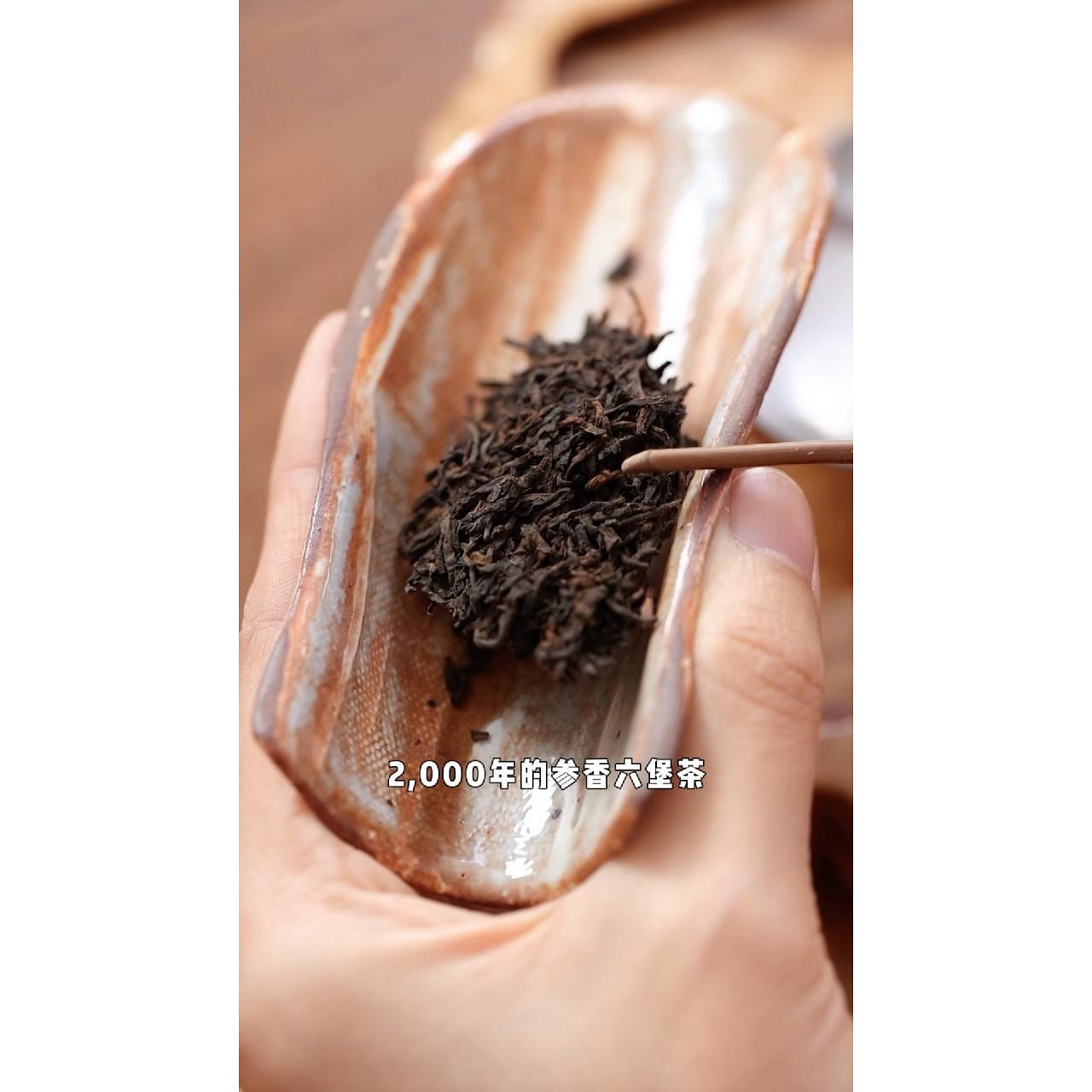2000 Ginseng Aroma Liu Bao Tea 100 g
Details
Description
This tea is meticulously selected from the tender buds and leaves of high-mountain spring harvests in Guangxi, predominantly sourced from old tea trees aged fifty to sixty years. These leaves are rich in intrinsic substances, laying a solid foundation for their subsequent transformation. Following ancient methods, it adheres to the traditional "double steaming and double pressing" process. Through the dual treatments of initial steam piling and re-steaming fermentation, it undergoes meticulous fermentation and is crafted with ingenuity. This technique imparts a mild nature to the tea, resulting in a mellow and thick taste devoid of astringency, offering a sweet and refreshing palate, and allowing ample space for future aging and transformation. After its creation in 2000, the tea was stored in a wooden board dry warehouse. Over twenty-five years of nurturing, it has gradually developed multi-layered aromas, including ginseng, medicinal, and honey notes.
The wooden board dry warehouse possesses a natural humidity-regulating function. The wood used is treated by being soaked and boiled in tea soup, enabling it to absorb odors and lock in the tea's fragrance during storage. This effectively prevents warehouse "taint" and allows the Liubao tea to become increasingly fragrant with age. The dry tea leaves are tightly-knotted, with a dark, lustrous, and glossy appearance, and a subtle presence of golden tips. On the dry nose, the aged aroma is pure and authentic, with distinct notes of ginseng and wood. The tea liquor is a deep, translucent red, with a mellow, smooth, and rich taste, high viscosity, and a pure and lasting fragrance. The first four infusions yield a deep, translucent red liquor with a delicate water passage, showcasing prominent ginseng and medicinal aromas. From the fifth to the eighth infusion, the tea liquor becomes a deep red that is clear to the bottom, offering a smooth and thick mouthfeel and a cooling throat-rhyme . Woody and honey notes become dominant during this stage, with a lingering hint of ginseng. From the ninth to the fifteenth infusion, the liquor transitions to a bright orange-red, presenting a sweet, mellow, and glutinous character, with a sweet and brisk lingering aftertaste, demonstrating its remarkable durability.
After simmering, the tea liquor takes on a deep, translucent red hue like a dark jujube, thick and oily in texture. The aroma becomes even richer and fuller, encompassing not only ginseng, medicinal, woody, and honey notes but also faint hints of milk and beans. The infused leaves are a dark brown, bright, soft, thick, neat, and clean, showcasing the elegant charm of twenty-five years of natural aging, making it an excellent Liubao tea suitable for both collection and drinking.




